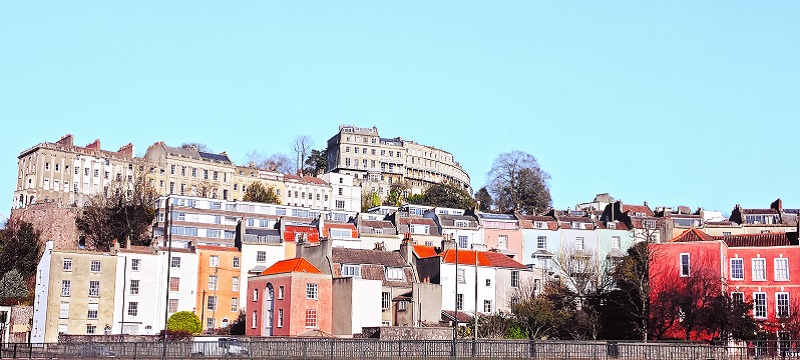Are you an owner of this business, venue or place? Claim your listing and attract more visitors.
A place to learn about the history of Bristol
Visit date:
Overview
This is a museum right on the dock which is all about the history of Bristol. Accessibility has clearly been a priority for this venue and you can see that both in the information on their website and when you’re there. The staff were great and really engaging. The entrances are both step-free and there is lift access to all floors, assistance dogs are welcome and the venue has a hearing loop too. There is a Changing Places Toilet and another accessible toilet with baby-changing facilities. There are so many great accessibility features here, I’ve gone into more detail about it all down below. And they are clearly continuing to see where they can do even more.
Transport & Parking
The museum itself doesn’t have any parking but there is a small car park just 320 metres away. It’s a pay and display car park which can be paid for at the machine or the RingGo app. The surface is a mix of tarmac, cobbles and gravel depending on where you park. There are also some accessible parking spaces at The Grove Car Park and next to Brunel’s Buttery according to the M Shed website. The road behind M Shed (Museum Street) is also recommended as a drop-off and pick-up point. There are some bus stops approximately 160 metres from the museum where the m2 metrobus stops.
Access
Even before visiting in person, there was lots of really helpful information on their website. They have a digital guide that can be accessed for free and gives more information about the history of the site as well as an interactive map. Outside, the access to get to the entrances was a little bit tricky. There are two main entrances; one has a cycle path right outside meaning you may encounter cycles as you enter and leave, the other has old rail tracks on the dock which I found tricky to navigate. My front castor wheels kept getting stuck in them and I had to go back and forth to find the best spots to cross the tracks to reach the entrance. Once inside the access was really good. The two entrances had two sets of automatic, sliding, double doors. The floor was a linoleum type flooring which made it very easy to navigate. In the main foyer area there was a gift shop, a reception area, a seating area, lifts, stairs and the main toilets. Everything was well spaced and had lots of room to navigate. The reception desk had a lowered part of the counter and their hearing loop was clearly symbolised too. There was a section where you could borrow foldable stools for those that wanted to take one around the museum with them. They also have two adult-sized wheelchairs available to loan. There was signage by the lifts that clearly explained what was on each floor and when you arrived the staff also gave out a small map of the museum too. The staff explained that they are also currently undergoing some extra work to improve and update their signage and also to create a tactile map of the museum too. They were also able to offer “bags of calm” for those with sensory needs and neurodivergencies. These included ear defenders, and fidget toys. The floors with exhibits were well-spaced and had a great variety of types of exhibits. The whole museum focuses on the history of Bristol; from important eras for the city to important people. There was also a range of ways to interact with the exhibits. There was lots of variety of sculptures, paintings, pictures, statues, items on display, videos and more. For items in display cabinets there were also digital screens that could be used to scroll through images and read more information about them. For exhibits where text and images were at table height, there were often gaps underneath the display. Meaning those in wheelchairs could roll right up to the information with their chair going underneath the display to get the best view. There was a part of the museum where visitors could write a message and the volunteers had even begun adding braille onto some of the messages too. The lifts to all floors were a little bit narrow but I was still able to get in with another wheelchair user. They had tactile buttons with the buttons for each floor also having braille on them. They also had audible announcements.
Toilets
There was a Changing Places Toilet on the ground floor and another accessible toilet on the first floor. Both were easy to locate and were operated by buttons that opened the door automatically for you and both doors opened outwards. They had horizontal grab rails on the inside of the door and the locks were simple, lightweight turning mechanisms. The Changing Places Toilet was on the ground floor near the non-accessible toilets. On the right hand side, once you entered, was the toilet which had space for a right-side transfer. A vertical grab rail was mounted on the wall behind the toilet and a horizontal grab rail mounted on the other side of the toilet. There was also another grab rail that could be raised and lowered. The flush was a sensor that was mounted to the wall behind the toilet. There were two more vertical grab rails mounted on either side of the sink which was quite small and had a tap that was manually operated (no automatic sensors). Above the sink was a wall-mounted soap dispenser and a wall-mounted paper towel dispenser. To the left of the sink was a wall-mounted hand dryer and underneath was a large bin that was open and had no lid to deal with. The toilet was in an L-shape so to the left was the longer part of the toilet. This was where a hoist and bench were stored. The height-adjustable bench was mounted to the wall and folded up when I was there. It could be unfolded and then raised and lowered with a remote that was on the wall. The hoist was not ceiling mounted, instead it was a portable hoist that could be moved manually and operated with a remote control. While it did have a bench and hoist, the space inside the toilet was limited, so those with large wheelchairs who required this equipment may struggle to manage the limited space. The accessible toilet on the first floor was a bit smaller and also had baby-changing facilities. The toilet had a vertical grab rail mounted on the wall behind the toilet and a horizontal grab rail mounted on the other side. There was space for a right-side transfer and there was also a small backrest. The flush was operated via a sensor that was mounted into the wall behind the toilet. The sink was on the left hand side of the toilet just in front of the toilet. It was a small sink with a tap that was manually operated (no automatic sensors). It had two vertical grab rails mounted above it and in between these was a soap dispenser and a paper towel dispenser that were both wall-mounted. To the left of these was a wall-mounted hand dryer. The baby changing facilities folded away so that they were flush with the wall meaning there was lots of turning space. The red emergency cords hung freely, all the way to the floor in both toilets. Both toilets had large mirrors on the wall, allowing everyone to be able to use them. There were three bins in both toilets; a feminine hygiene bin which had a lightweight lid opened by hand, one for diapers and other similar waste which had a foot-pedal and could be opened by hand and a general waste bin which either had no lid (ground floor toilet) or a lightweight lid that was left open or opened by hand (first floor toilet).
Staff
The staff were really friendly and helpful and were keen to let us know about the work they continue to do to make the venue more accessible. We spoke to one volunteer about the work they are doing to include more braille around the museum and it was really clear on our visit that accessibility is a priority for the staff at M Shed which made me feel really welcome and valued.











 Follow Euan's Guide on Instagram
Follow Euan's Guide on Instagram
 Follow Euan's Guide on LinkedIn
Follow Euan's Guide on LinkedIn
 Follow Euan's Guide on Facebook
Follow Euan's Guide on Facebook


Comments
You have to be signed in to leave a comment.
Login / Signup